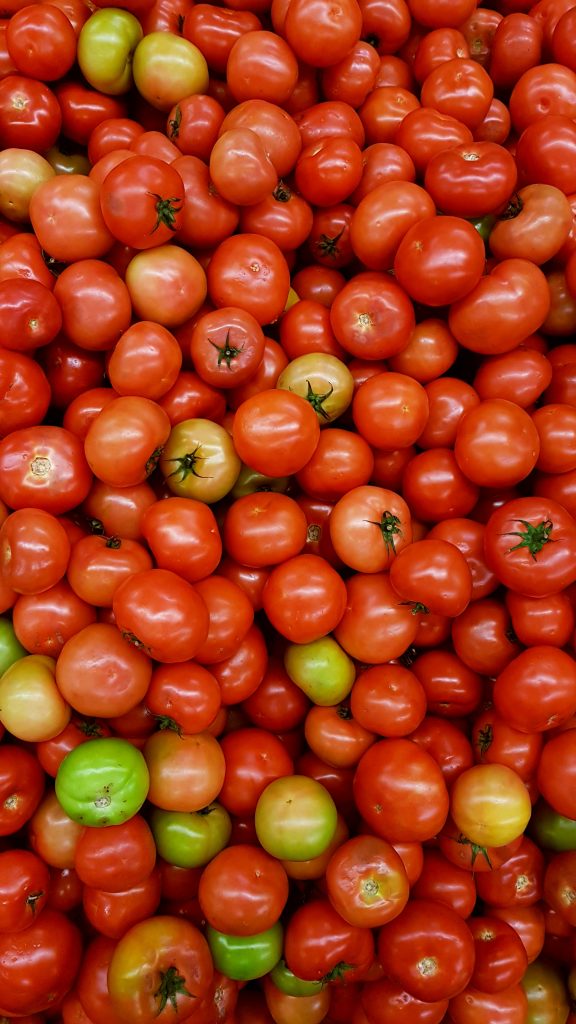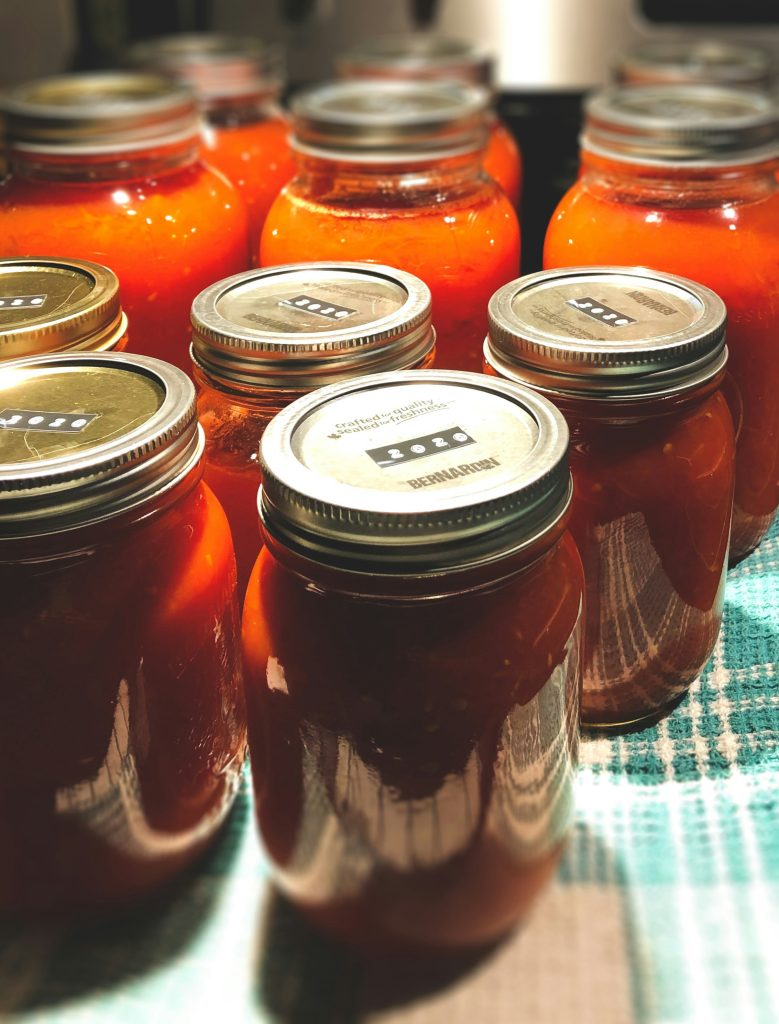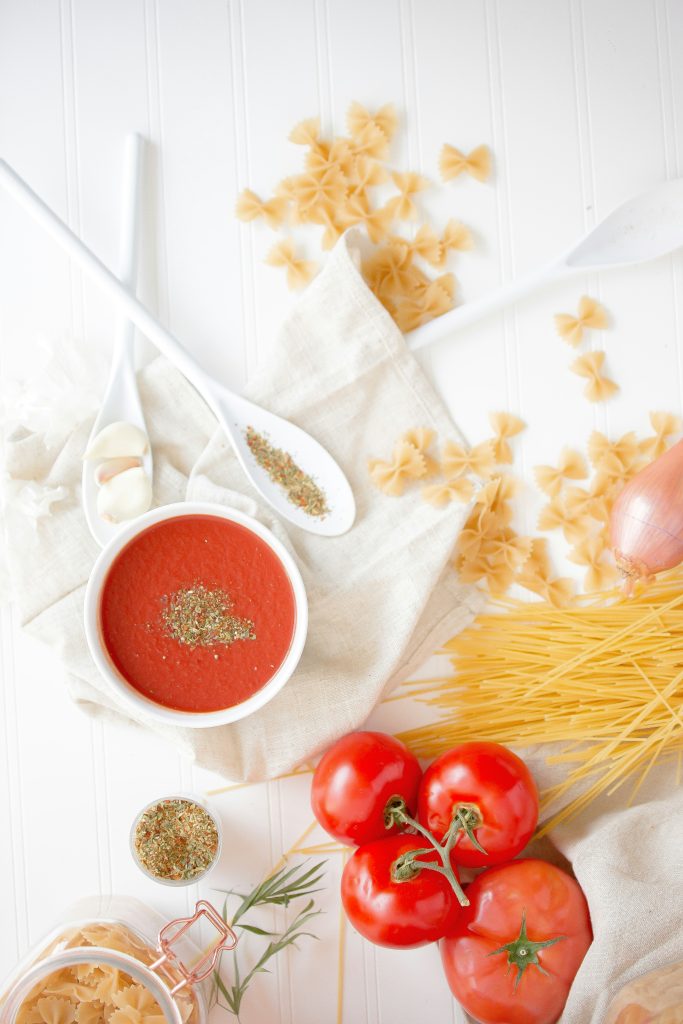Canning tomato sauce at home is a fantastic way to preserve the vibrant flavors of summer for use throughout the year. Whether you’re an experienced canner or a beginner, this guide will walk you through the process step-by-step, ensuring your tomato sauce is both delicious and safe.
Selecting Tomatoes
The first step in canning tomato sauce is selecting the right tomatoes. Opt for paste tomatoes such as Plum, San Marzano, or Amish Paste, as they have fewer seeds and less water content, making them ideal for sauces. While beefsteak or slicing tomatoes can be used, they tend to be more watery, and may require longer cooking times to achieve the desired thickness.

When selecting tomatoes, look for fruits that are firm, ripe, and free of blemishes or bruises. Overripe or damaged tomatoes can introduce unwanted bacteria or mold into your sauce, compromising its safety and flavor. Aim for about 20 pounds of tomatoes for every seven quarts of finished sauce.
Preparing and Cooking the Tomatoes
1. Wash and Core
Start by thoroughly washing the tomatoes under cool running water to remove any dirt or pesticides. Core the tomatoes to remove the tough stem ends.
2. Blanch and Peel
Blanch the tomatoes in boiling water for about 30-60 seconds, or until the skins start to split. Immediately transfer them to an ice water bath to stop the cooking process. Once cooled, the skins should easily peel off.
3. Cook the Tomatoes
After peeling, roughly chop the tomatoes and place them in a large pot. Crush them slightly with a potato masher to release some juice, then bring the mixture to a simmer over medium heat. Cook the tomatoes for about 20-30 minutes, stirring occasionally, until they break down into a saucy consistency.
4. Blend and Strain
For a smoother sauce, use an immersion blender to purée the tomatoes directly in the pot, or transfer them in batches to a regular blender. If you prefer a seedless sauce, strain the purée through a food mill or fine-mesh sieve to remove seeds and any remaining skins.
5. Season (Optional) At this stage, you can add seasonings such as salt, sugar, garlic, or herbs. However, avoid adding oil, butter, or dairy products, as these can affect the acidity level and potentially make the sauce unsafe for canning.
Sterilizing Jars and Lids
Properly sterilizing your jars and lids is crucial to ensure the safety and longevity of your canned tomato sauce. Here’s how to do it:
1. Wash
Begin by washing your jars, lids, and bands in hot, soapy water. Rinse them thoroughly to remove any soap residue.
2. Sterilize Jars
Place the jars on a rack in a large pot or canner, and cover them with water. Bring the water to a boil and let the jars boil for at least 10 minutes. Keep them in the hot water until you are ready to fill them with tomato sauce.
3. Prepare Lids
Modern canning lids do not require boiling. Instead, place them in a small pot of simmering water (not boiling) for about 10 minutes to soften the sealing compound.
Filling and Sealing the Jars
1. Fill the Jars
Using a jar lifter, remove a hot jar from the pot, emptying the water back into the pot. Place the jar on a clean towel or cutting board. Using a funnel, fill the jar with hot tomato sauce, leaving about ½ inch of headspace at the top.
2. Remove Air Bubbles
Slide a non-metallic spatula or chopstick around the inside of the jar to release any trapped air bubbles. Add more sauce if necessary to maintain the ½ inch headspace.

3. Wipe the Rims
Wipe the rim of the jar with a clean, damp cloth to ensure a good seal. Place a warm lid on the jar, and screw on the band until it is fingertip tight.
Water Bath Canning: Is It Safe?
Water bath canning is a method of processing high-acid foods such as fruits, pickles, and tomatoes. Since tomatoes are naturally acidic, they can be safely processed using this method, provided certain guidelines are followed.
1. Acidify
To ensure safety, it’s essential to acidify your tomato sauce by adding lemon juice or citric acid. The recommended amount is 2 tablespoons of bottled lemon juice or ½ teaspoon of citric acid per quart of sauce. This step helps maintain a safe acidity level to prevent the growth of harmful bacteria.
2. Process
Place the filled jars in a water bath canner, ensuring they are covered by at least 1 inch of water. Bring the water to a boil, then start timing. Process pint jars for 35 minutes and quart jars for 40 minutes at a rolling boil. Adjust processing time if you are at a high altitude.
3. Cool
Once processing is complete, turn off the heat and let the jars sit in the canner for 5 minutes. Then, use a jar lifter to transfer the jars to a towel-lined surface. Allow the jars to cool undisturbed for 12-24 hours.
4. Check Seals
After cooling, check the seals by pressing the center of each lid. If it does not flex up and down, the jar is sealed. If a jar has not sealed properly, refrigerate it and use within a few days or reprocess it with a new lid.
Storing Your Tomato Sauce

Store your sealed jars in a cool, dark place such as a pantry or cellar. Properly processed and sealed tomato sauce can last for up to one year. Be sure to label your jars with the date of canning, so you know which ones to use first.
Conclusion
Canning tomato sauce is a rewarding and practical way to preserve the essence of ripe tomatoes for year-round enjoyment. By carefully selecting your tomatoes, properly preparing and cooking them, sterilizing your jars and lids, and following safe water bath canning procedures, you can ensure your homemade tomato sauce is both delicious and safe. Happy canning!

